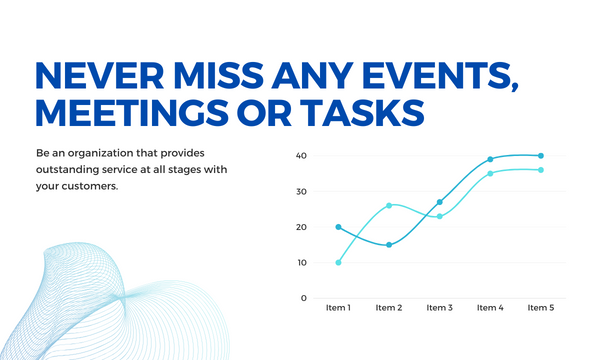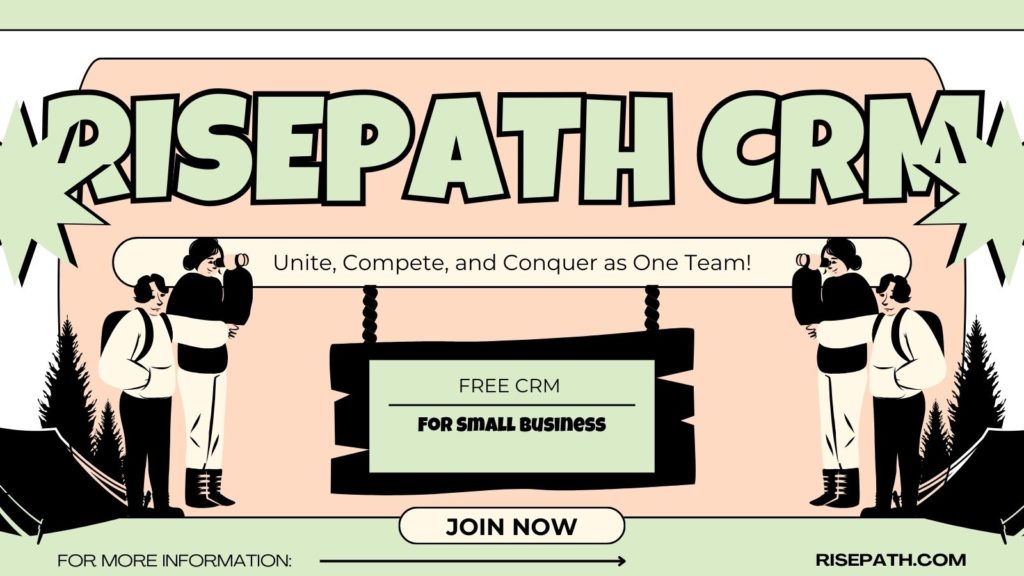Remote customer support onboarding is the process of incorporating new employees into a company’s customer support team using technology for video calls and engagement. Remote onboarding has become increasingly important in recent years due to the rise of remote work and the need to adapt to changing work environments.
Remote onboarding is essential for building stronger relationships with customers, as it enables customers to onboard remotely, leading to increased satisfaction and improved customer retention.
Remote onboarding offers numerous benefits, including increased efficiency, more flexibility, and personalized attention. Proper onboarding can also lead to improved new hire productivity, increased employee satisfaction, and decreased staff turnover.
Remote onboarding allows recruiters to control team communications and not leave relationships at work to chance. They use remote meetings and digitized documentation to ensure that new hires get the necessary training and resources. However, remote onboarding also presents unique challenges that must be addressed to ensure a successful onboarding process.
Also Read: Creating a Engaged Remote Team Building
One of the primary challenges of remote onboarding is the lack of engagement and interaction between new hires and their colleagues. Remote employees are robbed of daily office interactions and engagement with their colleagues, which could lead to feelings of isolation and disconnection.
Other challenges include a lack of clarity and alignment, lack of resources and support, and lack of feedback and recognition. To overcome these challenges, companies should develop an onboarding timeline, create engaging training materials, track onboarding progress, and prioritize remote team building. By addressing these challenges, companies can ensure a successful remote onboarding process and set their remote customer support team up for success.
Tips to Preparing for Onboarding
Before beginning the onboarding process for a remote customer support team, it is essential to set clear goals and objectives. These goals should be specific, measurable, achievable, relevant, and time-bound, ensuring that everyone involved in the process understands what is expected of them.
Customer service managers can assign a quality score to every interaction to ensure that the team is meeting the desired standards. By setting clear goals and objectives, team leaders can ensure that the onboarding process is efficient and effective, enabling new team members to quickly become productive and valuable members of the team.
Creating an onboarding plan is the next step in preparing for the onboarding process. The plan should include a personalized onboarding journey for each team member, tying individual, team, and organizational goals to training objectives.
The plan should also incorporate a customer support new hire checklist, which includes introducing the company culture, explaining support goals and purpose, and discussing support KPIs and metrics. Developing an engaging training material and tracking onboarding progress are also crucial components of a successful onboarding plan.
Developing a communication strategy is the third essential step in preparing for the onboarding process. An effective communication strategy should include a documented process that guides the team and ensures that everyone is on the same page.
Also Read: The Ultimate Guide to Keeping Your Remote Team Connected
One-to-one training is also vital for new employees, ensuring that they do not feel isolated and have the support they need to succeed. Prioritizing remote team building and establishing processes that ensure success from day one is also essential for effective communication.
Communication and feedback should be prioritized to ensure that onboarding and future collaboration go smoothly. Utilizing an approach that crafts a strong virtual onboarding communication plan that sets up every new hire for success is also recommended.
Finally, improving remote employee engagement through tailored communications and using list management to segment and customize email lists can also be helpful.
Preparing the Remote Team for Onboarding
Introducing the remote onboarding process is a crucial first step in preparing a customer support team for onboarding. Remote onboarding is the process of bringing new virtual employees into a team and company, and it can take anywhere from one to three months to complete.
It is important to communicate the process and timeline clearly to the new hires, so they know what to expect and can plan accordingly. This communication can help to build trust and set a positive tone for the onboarding process. By introducing the remote onboarding process, the team can begin to prepare for the upcoming training and establish a foundation for success.
Providing technical support and training is another essential component of onboarding a remote customer support team. This training should be engaging and cover all necessary technical skills and tools required for the job. One-to-one training is vital for new employees, and it’s important to ensure they don’t feel isolated during the process.
Providing great support is challenging, so it’s crucial to ensure that the team has the necessary skills and knowledge to perform their job effectively. By investing in technical support and training, the team can feel more confident and prepared to handle customer inquiries.
Establishing clear expectations is a vital step in onboarding a remote customer support team. It’s essential to set expectations around remote work, communication, and working norms. This includes defining expectations around response times, availability for meetings, and the appropriate use of communication platforms.
Regular one-on-one meetings should be scheduled to track progress and address any concerns. By setting clear expectations, the team can feel more comfortable in their role and can work more effectively with their colleagues. Successfully onboarding new team members will ensure they learn their role faster and are more likely to stick around in the company.
The establishment of clear expectations can set a positive tone for the ongoing relationship between the team and the company. In summary, preparing a remote customer support team for onboarding requires the introduction of the remote onboarding process, providing technical support and training, and establishing clear expectations. By investing in these steps, the team can feel more confident and prepared to handle customer inquiries, leading to a positive experience for both the team and the customers.
Day 1: Welcome and Orientation
Onboarding a remote customer support team requires a thoughtful and comprehensive approach. Day 1 of the onboarding process should begin with a warm welcome and orientation to the company and its culture. This includes introducing the new hire to the company’s mission, values, and goals, as well as providing an overview of the company’s culture and work environment. By establishing a strong foundation of company culture and values, new hires can better understand their role and feel more connected to the team.
After the introduction to the company and culture, the new hire should receive an overview of the support team’s role. This includes a clear understanding of the team’s responsibilities and expectations, as well as an introduction to the team’s goals and objectives. This information can help new hires understand how their role fits into the larger picture and provide a sense of purpose and direction.
Familiarization with tools and systems is also an essential part of day 1 of the onboarding process. This includes providing an overview of the company’s communication tools, customer support software, and any other relevant systems. It is crucial to ensure that new hires are comfortable and proficient with these tools to enable them to perform their duties effectively.
Providing training and support on these tools and systems can help new hires feel more confident and capable in their role.
In conclusion, day 1 of onboarding a remote customer support team should focus on creating a strong foundation of company culture and values, providing an overview of the team’s role and responsibilities, and ensuring familiarity with the tools and systems necessary to perform the job effectively.
By taking a comprehensive approach to onboarding, companies can set their remote customer support team members up for success and foster a sense of connection and belonging within the team.
Week 1: Product and Process Training
The first week of onboarding a remote customer support team should focus on providing comprehensive product and process training. This training should include three sub-outlines: understanding the product or service, learning the support process and procedures, and shadowing experienced team members.
Understanding the product or service is crucial for customer support team members to be effective in their roles. They should have a deep understanding of the company’s products or services, including their features, benefits, and limitations. This knowledge will enable them to provide accurate and helpful support to customers.
In addition to understanding the product or service, new team members should also learn the support process and procedures. This includes familiarizing themselves with the company’s support channels, such as email, phone, or chat.
They should also be trained on how to handle different types of customer inquiries, such as technical issues, billing questions, or product inquiries. Providing clear and concise guidance on these procedures will help new team members feel confident in their ability to handle customer inquiries.
Shadowing experienced team members is an effective way to provide new team members with hands-on training and mentoring. Pairing new hires with experienced customer support team members for shadowing and mentoring can help them learn the ropes, gain practical experience, and ask questions in a supportive environment. Incorporating culture-related topics in team meetings can also help new team members feel more connected to the company and its values.
In conclusion, the first week of onboarding a remote customer support team should prioritize comprehensive product and process training. By ensuring that new team members understand the company’s products or services, support procedures, and have opportunities to shadow experienced team members, they will be better equipped to provide effective support to customers and contribute to the success of the team.
Week 2: Customer Interactions and Soft Skills
Effective communication skills are crucial for remote customer support teams, as they are the primary point of contact for customers. Developing these skills should be a key focus during the onboarding process. This includes training on active listening, clear and concise verbal and written communication, and adapting communication style to fit the customer’s needs and preferences.
Providing opportunities for practice and feedback can also help team members improve their communication skills and build confidence in their ability to handle customer interactions. By prioritizing the development of effective communication skills, remote customer support teams can provide a high level of service to customers and build strong relationships with them.
Remote customer support teams will encounter a wide range of customers, each with their unique needs, preferences, and communication styles. Therefore, it’s essential to train team members on how to handle different types of customers, including angry or upset customers, those with language barriers, and those with accessibility needs.
Providing training on empathy, problem-solving, and conflict resolution can also help team members handle challenging situations with professionalism and grace. By equipping team members with the skills and knowledge to handle different types of customers, remote customer support teams can provide excellent service to all customers, regardless of their needs.
Remote customer support teams often work across different time zones, which can make managing time and priorities challenging. Providing training on time management strategies, such as setting priorities, delegating tasks, and using productivity tools, can help team members effectively manage their workload and meet customer needs.
Additionally, clear communication and collaboration guidelines can help team members coordinate across time zones and ensure that everyone is working towards the same goals. By prioritizing time management and collaboration during the onboarding process, remote customer support teams can work efficiently and effectively, delivering high-quality service to customers.
Week 3: Performance and Feedback
To ensure the success of a remote customer support team, it is essential to set clear performance expectations and goals from the outset. This involves defining specific and measurable goals that are relevant and attainable, as well as communicating key responsibilities and deliverables. By establishing these expectations early on, team members can work towards common objectives and understand how their performance will be evaluated.
It is also important to ensure that these goals align with the overall objectives of the organization, providing a sense of purpose and direction. By setting performance expectations and goals, remote customer support teams can work towards achieving success in a structured and focused manner.
Providing regular feedback and coaching is another crucial component of managing a remote customer support team. Assigning senior team members as coaches to share first-hand experience and knowledge about providing customer service through scheduled 1:1 meetings can be an effective way to provide feedback.
Additionally, scheduling regular check-ins and establishing feedback loops can help team members understand their strengths and areas for improvement. By providing ongoing support and coaching, remote customer support teams can continuously improve their performance and deliver exceptional service to customers.
Addressing performance issues is an important aspect of managing a remote customer support team. If a team member is not meeting performance expectations, it is crucial to address the issue promptly and provide constructive feedback. This can involve identifying the root cause of the issue, providing additional training or resources, or developing a performance improvement plan.
By addressing performance issues in a timely and effective manner, remote customer support teams can maintain high standards of performance and ensure that customer needs are met to the best of their ability.
Ongoing Support and Development
Providing ongoing training and development opportunities is crucial to the success of a remote customer support team[36]. Remote onboarding should not be limited to just the initial weeks or months, as new hires need continued support and guidance to develop their skills and knowledge.
By offering ongoing training and development opportunities, such as mentorship programs, skills workshops, and online courses, you can help your team stay up-to-date with the latest industry trends and best practices. This will not only enhance the quality of customer support but also boost employee satisfaction and retention.
Encouraging team collaboration and knowledge sharing is another vital aspect of ongoing support and development for a remote customer support team. Remote workers may feel isolated and disconnected from their colleagues, making it challenging to share knowledge and collaborate effectively.
By creating a culture of knowledge sharing and assigning mentors or buddies to new hires, you can foster a support system where experienced team members can provide guidance and support. Utilizing collaboration tools such as chat groups and communication platforms can also facilitate recognition efforts and celebrate team achievements.
Recognizing and rewarding achievements is a crucial element of ongoing support and development for remote customer support teams. Celebrating milestones, exceptional performance, and team achievements can boost team morale and motivation.
In a remote workplace, it is important to use collaboration tools to support recognition efforts and create a sense of community. Performance recognition can be done individually or as a team, and it is essential to recognize the efforts of remote workers to make them feel valued and appreciated. By prioritizing ongoing support and development, remote customer support teams can thrive, delivering exceptional customer service and achieving business success.
Tips And Best Practices
Define clear goals and expectations – Clearly define the goals and expectations for the remote customer support team. This includes outlining key performance indicators (KPIs), response time targets, and customer satisfaction metrics. Provide the team with a detailed job description that highlights their responsibilities and performance expectations. By setting clear goals and expectations from the start, you can ensure that everyone is aligned and working towards the same objectives.
Develop a comprehensive training program – Develop a comprehensive training program that covers not only the technical aspects of the job but also the company culture, values, and customer service standards. Consider using a mix of video tutorials, webinars, and interactive exercises to engage remote team members.
Provide ample opportunities for them to ask questions and seek clarification. Additionally, assign a mentor or buddy to each new hire to provide ongoing support and guidance throughout the onboarding process.
Leverage technology tools for communication and collaboration – Utilize technology tools that facilitate seamless communication and collaboration among remote team members. Video conferencing platforms like Zoom or Microsoft Teams can be used for team meetings, training sessions, and one-on-one check-ins.
Project management tools like RisePath can help track progress and assign tasks. Implementing a knowledge base or ticketing system, such as RisePath PlanCenter, can centralize customer inquiries and ensure efficient handling.
Foster a sense of belonging and team cohesion – Remote team members may feel isolated, so it’s important to foster a sense of belonging and team cohesion. Regularly schedule team-building activities, such as virtual happy hours or online games, to encourage social interaction and strengthen relationships.
Create channels for informal communication, like a dedicated chat room, where team members can share non-work-related updates or engage in casual conversations. Celebrate team wins and milestones to boost morale and create a positive work environment.
Provide ongoing feedback and performance evaluations – Regularly provide feedback and conduct performance evaluations to ensure that remote team members are meeting expectations and continuously improving.
Schedule regular one-on-one meetings to discuss individual performance, address any concerns or challenges, and provide constructive feedback. Recognize and reward outstanding performance to motivate and engage the team. Use performance evaluation metrics to identify areas for improvement and offer targeted training or support as needed.
Faqs
Q: What is remote onboarding for customer support teams? A: Remote onboarding for customer support teams refers to the process of integrating and training new team members who will be working remotely in providing customer support services. It involves introducing them to the company, its culture, and the tools and systems they will be using, as well as providing training on product knowledge, support processes, and developing soft skills.
Q: What are the benefits of remote onboarding for customer support teams? A: Remote onboarding offers several benefits for customer support teams, including flexibility in hiring talent from anywhere in the world, cost savings on office space and equipment, and increased productivity due to reduced commuting time. It also allows for a diverse and inclusive team, as geographical constraints are minimized, and helps in building a resilient team that can adapt to remote work situations.
Q: What are the challenges of remote onboarding for customer support teams? A: Remote onboarding for customer support teams can present challenges such as the lack of face-to-face interaction, potential communication barriers, and difficulties in monitoring and providing immediate feedback. It may also require additional efforts in providing technical support and training remotely. However, with proper planning and the use of technology, these challenges can be addressed effectively.
Q: How can I prepare the team for remote onboarding? A: To prepare the team for remote onboarding, it is important to introduce the remote onboarding process and its objectives to the existing team members. Providing technical support and training to ensure they are familiar with the tools and systems used in remote work is crucial. Clear expectations should also be established regarding communication channels, availability, and performance standards to ensure a smooth integration of new team members.
Q: What does the remote customer support onboarding process entail? A: The remote customer support onboarding process typically includes a welcome and orientation session on the first day, where new team members are introduced to the company’s culture, their role in the support team, and the tools and systems they will be using.
In the following weeks, training sessions on product knowledge, support processes, and soft skills are conducted. Performance expectations and goals are set, and regular feedback and coaching sessions are provided. Ongoing support, development opportunities, and recognition of achievements are also part of the process to ensure continuous growth and engagement.
Conclusion
In conclusion, onboarding a remote customer support team requires careful planning and execution to ensure a smooth transition. Preparing for onboarding, introducing the remote onboarding process, providing technical support and training, and establishing clear expectations are all critical steps in the process. The first few weeks of onboarding focus on familiarizing the team with the company culture, product or service, support process and procedures, and developing effective communication skills.
Ongoing support and development opportunities, team collaboration, and recognition of achievements are essential for maintaining a motivated and engaged remote support team. While remote onboarding may present challenges, the benefits of a well-prepared and trained team can lead to improved customer satisfaction, increased productivity, and a positive impact on the company’s bottom line.






Comments are closed, but trackbacks and pingbacks are open.